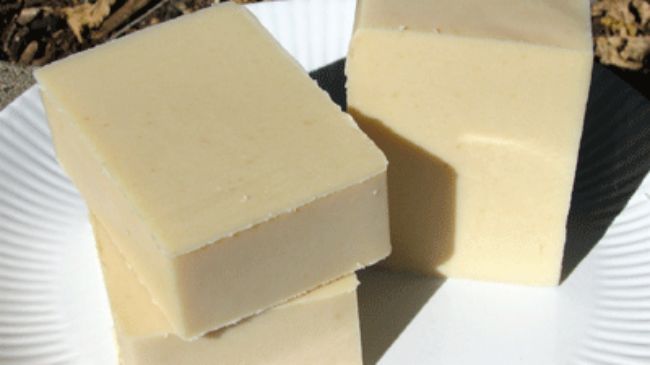
What is Castile Soap?
Castile is a vegetable soap derived from olive oil, water, and lye. It is a gentle, biodegradable, non-toxic soap, and it is great for cleaning dishes, toilets, sinks, fruits, vegetables, skin, and even hair. Many people have turned to castile soap as a replacement for chemical-filled shampoos. Popular brands like Dr. Bronners, Quinn’s Pure Castile Organic Liquid Soap, and Cove Castile soap are often used to wash hair and skin.
Image Source: @amiraondawall
Castile soap is strong enough to cleanse the scalp of excess sebum and product buildup but gentle enough not to leave our hair stripped and dry; thus, castile soap is a great alternative to commercial shampoo. But before you consider switching to castile soap as your new shampoo, you may want to know a few of these pointers.
FAST FACTS ABOUT CASTILE SOAP

- It is extremely potent. Never use castile soap directly onto the skin or hair; it is far too strong and will surely leave your hair feeling like a straw. Grab an empty shampoo bottle, pour in 1 teaspoon of castile soap, and fill the rest of the bottle with filtered water. The more soap you use, the stronger the solution will be. But in general, a little soap goes a long way.
- It is not color-safe. Soaps, in general, tend to be alkaline (high pH), which means they can open the hair cuticle, thus releasing the hair dye quicker from the hair strands, leading to faded and spotted hair dye.
- It is balancing pH. Many people will have the tendency to want to balance out the pH of the alkaline soap with an acidic solution; the best way to do this is to rinse your hair afterward with an acidic rinse such as apple cider vinegar. Do not mix an acidic solution with a basic solution; you may have a big mess in your hair.
- It is not for everyone. For the most part, people either love castile soap for their hair or hate it. It is not for everyone because we all have different hair that reacts differently to different products. Try experimenting by using the soap with different dilutions (1 teaspoon and one cup water, or 1/2 teaspoon and 2 cups of water, etc.) until you find the right dilution for you. If you think you have had enough of experimenting, you may want to keep using your sulfate-free shampoos.
Image Source: @stylesbyekellc
MAKE YOUR OWN CASTILE SOAP CLARIFYING SHAMPOO

One of the coolest things about castile soap is that you can make shampoos that are completely customizable. To make a personalized shampoo you just need the following:
- Empty bottle
- Castile soap
- Essential oil
- Carrier oil
- Water
You can get creative and add other things such as herbs or use tea water instead of plain water. Experiment with the measurements of each ingredient to see what your hair likes best.

Image Source: @drbronner
- 2 ounces Dr. Bronner’s Unscented Baby Mild Pure Castile Soap
- 4 ounces water infused with rosemary, plantain, calendula flowers, and rose petals
- 1/4 teaspoon tamanu oil
- 10 drops of tea tree oil
- 5 drops of rosemary essential oil
- 15 to 20 drops of lavender essential oil
Directions
Grab a pot fill it with water and infuse the herbs into the water with heat, and then add all the oils. Once the oils and herbs are infused with the water put the water into a bottle and add the soap and voila homemade shampoo. Just to be safe, keep the shampoo in the fridge to prevent microbial growth and to make the shelf life longer.
Have you used castile soap? What was your experience? Let us know in comments!
OUR EDITORS INDEPENDENTLY SELECT ALL PRODUCTS FEATURED ON NATURALLYCURLY. HOWEVER, WE MAY EARN AN AFFILIATE COMMISSION WHEN YOU BUY SOMETHING THROUGH OUR RETAIL LINKS.
What other soaps do you use to






















